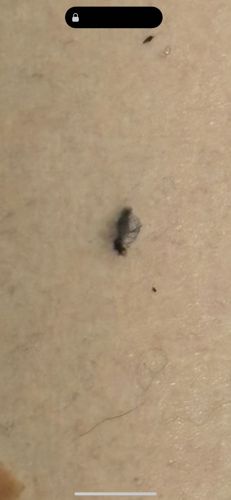Flea
Scientific Name: Siphonaptera (order - specific species difficult to discern from image)
Order & Family: Order: Siphonaptera
Size: 1.5 to 3.3 millimeters (0.06 to 0.13 inches) in length

Natural Habitat
Fleas primarily live on the bodies of warm-blooded animals, particularly mammals and birds. They can also be found in animal bedding, carpets, cracks in floors, and other sheltered areas within their host's environment.
Diet & Feeding
Adult fleas are obligate hematophagous parasites, meaning they feed exclusively on the blood of their hosts. Larvae feed on organic debris, including adult flea feces (which contains undigested blood).
Behavior Patterns
Fleas are known for their remarkable jumping ability relative to their size, allowing them to easily move between hosts. They have a complete metamorphosis life cycle (egg, larva, pupa, adult). Adults are highly active and will jump onto a host for blood meals. They can lay many eggs rapidly.
Risks & Benefits
Potential risks include causing itchy bites, skin irritation, allergic reactions (flea allergy dermatitis), and transmitting diseases such as Bartonellosis (cat scratch disease), murine typhus, and historically, the bubonic plague (though this is rare now). They can also cause anemia in heavily infested animals. There are generally no direct benefits to humans from fleas; they are considered pests.
Identified on: 9/11/2025